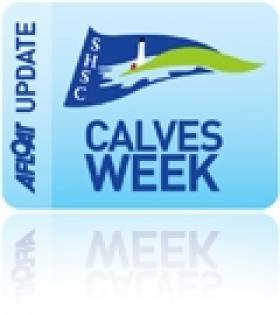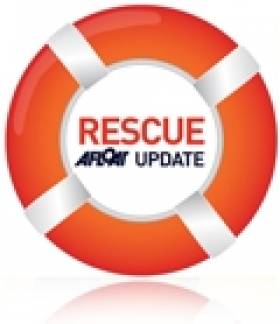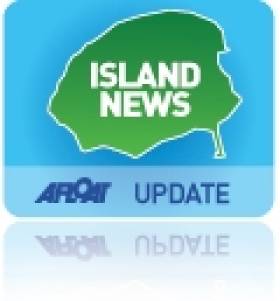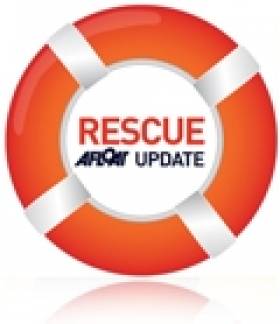Displaying items by tag: west cork
420 Mid-Term Training Camp in Schull
Sixteen crews have so far confirmed their participation at the 420 Class's Mid-term Training Camp at Fastnet Marine and Outdoor Education Centre in Schull, County Cork.
Coaching will be provided by Irish Olympic Sailor Ross Killian, Tom Mapplebeck, Christian Birrell and double 470 World Champion Nic Asher.
Further information on the Training Camp, which runs from Monday 13th to Friday 17th February, can be found on http://www.sail420.com/
Major Cut-Back for Calves Week 2012
#CALVES WEEK – Calves week is to be cut down to a four day event this August in response to competitors requests for a shorter and less expensive event writes Claire Bateman. This year, as an alternative to the traditional event spanning a two week period, the Schull based sailing programme will consist of a four day Calves Week Championships, running from Tuesday 7th to Friday 10th of August, with the usual mix of courses taking in the Fastnet Rock and many of Carberys Hundred Isles, together with laid courses in Roaringwater Bay.
Daily prizegiving will take place on Main Street Schull where a nautical festival theme for the village is being organised by local businesses.
The traditional regattas on August Monday in Baltimore and the following Saturday and Sunday in Crookhaven and Schull will continue as stand alone events with their own courses and prizegivings being organised by the local sailing clubs.
The week will once again commence with the overnight Crosshaven/Schull race starting the activities on Friday August 3rd, while on Saturday morning August 4th the White Sail fleet will have an early start from Kinsale. Both of these races will form part of the new Scora Offshore Championships, together with the midweek Fastnet Race out of Schull.
Search for Glandore Fishermen to be Wound Down
#NEWS UPDATE - The search for two fishermen still missing after their boat went down off West Cork nearly three weeks ago will be wound down next week, The Irish Times reports.
Search teams have been combing the area for any trace of Michael Hayes (35), skipper of the Tit Bonhomme, and crewman Said Mohammed (23) after the fishing vessel ran aground in rough seas near Adam's Rock, at the mouth of Glandore Harbour, on Sunday 15 January.
The bodies of Kevin Kershaw (21), Attia Shaban (26) and Wael Mohammed (35) were recovered in the days and weeks following the tragedy. Only one of the six-person crew - 43-year-old Abdul Mohammed – is confirmed to have survived.
As previously reported on Afloat.ie, last weekend saw more than 90 divers embark on an extensive search of the wreck site and the Glandore bay area, with hundreds more volunteers searching the coastline and on land.
Coastguard 'Overwhelmed' By Response to Glandore Search Appeal
#NEWS UPDATE - The Irish Coast Guard told RTÉ News that it has received an "overwhelming" response from the diving community to its appeal to join the search in West Cork for two missing fishermen.
Skipper Michael Hayes and crewman Saied Ali Eldin are still missing after the fishing vessel Tit Bonhomme ran aground in rough seas near Adam's Rock at the mouth of Glandore Harbour.
Only one of the six-person crew - 43-year-old Abdul Mohammed – is confirmed to have survived. The bodies of Kevin Kershaw (21) and Attia Shaban (26) were recovered last week, while the remains of Wael Mohammed (35) were found by civilian divers near the wreck site last Sunday.
Coastguard manager Declan Geoghegan said that search teams now have the 48 divers required to conduct an exhaustive search of the wreck area and urged further volunteers not to travel for the moment.
The search will concentrate on the waters between Adam's Rock and Long Point, where much of the debris from the trawler has washed up.
RTÉ News reports that more than 200 volunteers are assisting the coastal search by boat and on land, which is being co-ordinated from the village of Union Hall.
Hotel and Apartments With Views of Schull Harbour On The Market
#WATERFRONT PROPERTY - A hotel with adjacent apartments in Schull, West Cork has come to the market with a guide price of €1.025m, PropertyPlus reports.
Located on Schull's main street, the Harbour View Hotel has pictureque views of Schull Harbour and its islands, which are very popular with tourists.
The hotel features 30 en-suite bedrooms, a bar and restaurant, breakfast room, function room and a leisure centre with swimming pool, while the eight vacant apartments are all fully fitted with timber floors.
Both hotel and apartments are offered as a single lot through joint agents Savills and James Lyons O'Keefe (Schull).
The hotel is available as a separate lot guiding at €500,000, while the eight apartments are being offered for €525,000. Rental of the apartments as a single lot will also be considered.
More details on the property, including images, can be found HERE.
Search Continues for Three Fishermen Still Missing in West Cork
#NEWS UPDATE - The search is set to resume again this morning for the three fishermen not yet recovered after their trawler sank off West Cork last Sunday.
Skipper Michael Hayes and Egyptian crewmen Saied Ali Eldin and Wael Mohammed have been missing since the fishing vessel Tit Bonhomme ran aground and went down in rough seas near Adam's Rock, at the mouth of Glandore Harbour.
Only one of the six-person crew, 43-year-old Abdul Mohammed, is confirmed alive after he was able to reach the shore immediately following the incident.
As previously reported on Afloat.ie, Garda divers retrieved the body of Attia Shaban (26) on Thursday morning, followed in the afternoon by that of Kevin Kershaw (21).
Yesterday the search was expanded to cover an 18-mile radius after a dive at the wreck site was unsuccessful, according to The Irish Times.
Divers from the Garda and Naval Service will continue to focus on the wreck today, helped by favourable weather conditions, while volunteers join in the wider search of the coastline.
It emerged on Friday that that boat's aluminium wheelhouse sheared off in the rough seas that followed for three days after it ran aground.
RTÉ News has video of the search operation in progress HERE.
Body Recovered as Search for West Cork Fishermen Continues
#RESCUE - Garda divers have this morning recovered a body in their search for the crew of the fishing vessel Tit Bonhomme off the coast of West Cork.
As previously reported on Afloat.ie, five of the six-person crew went missing after the boat ran aground and went down rough seas near Adam's Rock, at the mouth of Glandore Harbour.
The five men include skipper Michael Hayes from Helvic Head in Co Waterford, Dubliner Kevin Kershaw (21) and Egyptians Said Mohammed (23), Wael Mohammed (35) and Attea Ahmed Shaban (26).
RTÉ News reports that the body recovered this morning has not been identified, but it is believed to be that of an Egyptian national.
Dive teams from the Garda and Naval Service have been set back by the trawler's position wedged in a narrow inlet with strong wash and backwash on either side, but were said to have made "significant progress" during dives yesterday.
A broader search is also being conducted inside and outside the harbour area and surrounding coastline, assisted by fishing boats, Irish Coast Guard rescue helicopters, and small boats and kayaks.
Search Resumes for Missing Fishermen in West Cork
#RESCUE - The search resumed this morning for five men missing after their fishing boat went down in rough seas in West Cork early yesterday, The Irish Times reports.
One of the six-person crew of the Tit Bonhomme was rescued when he was able to reach the shore, after the boat ran aground near Adam's Rock at the mouth of Glandore Harbour.
The missing include skipper Michael Hayes from Helvic Head in Co Waterford, Dubliner Kevin Kershaw (21) and Egyptians Said Mohammed (23), Wael Mohammed (35) and Attea Ahmed Shaban (26).
Abdul Mohammed (43) was airlifted by Irish Coast Guard helicopter to Cork University Hospital, where he is in a stable condition.
As previously reported on Afloat.ie, the fishing boat was returning to its home port of Union Hall early on Sunday in strong force 7-8 southeasterly winds when the incident occurred.
Naval Service and Garda divers were scheduled to search the sunken vessel today after postponing yesterday due to poor light and big swells.
The Irish Times has more on the story HERE.
New 2012 Timetable for Cape Clear Ferry
#ISLANDS -The Cape Clear Ferry which operates the service between the Wst Cork island and Baltimore, has outlined revisions to sailing schedules for this year. The proposed changes follow a consultation process held with the islanders, as previously reported on Afloat.ie
The changes to sailings during the months of May, June and September and also to schedules between 1st April-30th December are available to view by clicking HERE.
In addition a table showing the minimum frequency of daily return sailings are also outlined.
Air Corps Patrol Assists in Rescue of Injured Fisherman
#RESCUE - The Irish Times reports that an Air Corps maritime patrol aircraft joined a search and rescue mission to evacuate a fisherman off the West Cork coast today.
The Casa CN 235 - one of two operated by the Air Corps - diverted from its daily patrol to provide a communications relay in the operation to rescue an injured crewman from a Spanish fishing boat some 100 miles south of of Castletownbere.
The fisherman was airlifted by an Irish Coast Guard helicopter which at last report was taking him to medical attention in Cork.






































































